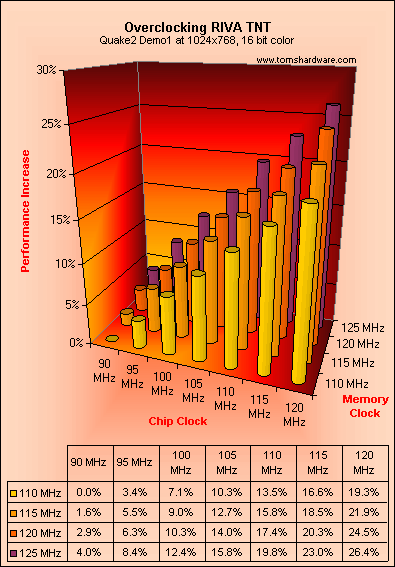Comparison of Graphics Cards with NVIDIA's RIVA TNT Chip
Overclocking Part 1
Overclocking is a big issue with TNT, because almost each TNT card can run faster than the default speed of 90/100 MHz for core and memory clock. However, overclocked chips get hotter, so that a decent cooling should be provided. Let me first show you the performance impact of overclocking TNT:
Increasing the chip clock has definitely got a higher impact on 3D performance than increasing the memory clock. Running the TNT chip at 105 MHz instead of 90 MHz gives you at least a 10% improvement in Quake2's Demo1 benchmark. A card that can be overclocked as high as my Asus V3400TNT to incredible 120/125 MHz reaches a 26% 3D performance improvement, something that's certainly noticeable.
Please consider that overclocking a 3D chip is following the same rules as overclocking a CPU. Not every chip has the same ability to run at the same high speeds. Even in case of an excellent cooling as provided by the Asus TNT boards, you may not be able to reach the 120/125 MHz setting. However, a chip that is cooled as badly as in case of the STB Velocity 4400, will hardly ever be able to reach high clock speeds. The same is valid for the memory. Some memory chips can cope with up to 125 MHz, others can't. Memory chips are a bit more consistent though.
Get Tom's Hardware's best news and in-depth reviews, straight to your inbox.
